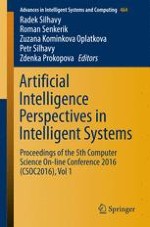This volume is based on the research papers presented in the 5th Computer Science On-line Conference.
The volume Artificial Intelligence Perspectives in Intelligent Systems presents modern trends and methods to real-world problems, and in particular, exploratory research that describes novel approaches in the field of artificial intelligence. New algorithms in a variety of fields are also presented.
The Computer Science On-line Conference (CSOC 2016) is intended to provide an international forum for discussions on the latest research results in all areas related to Computer Science.
The addressed topics are the theoretical aspects and applications of Computer Science, Artificial Intelligences, Cybernetics, Automation Control Theory and Software Engineering.
